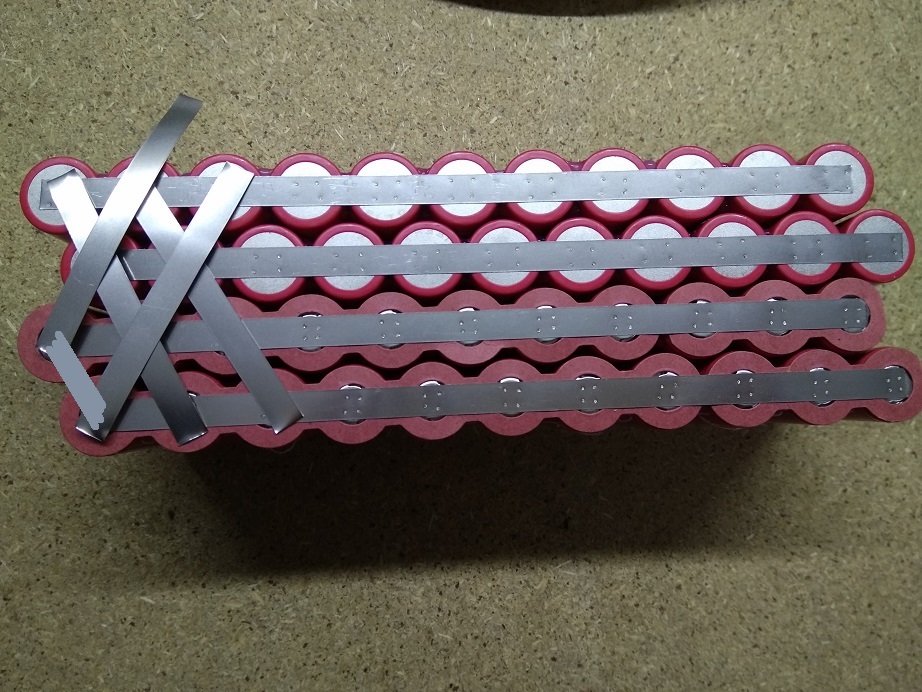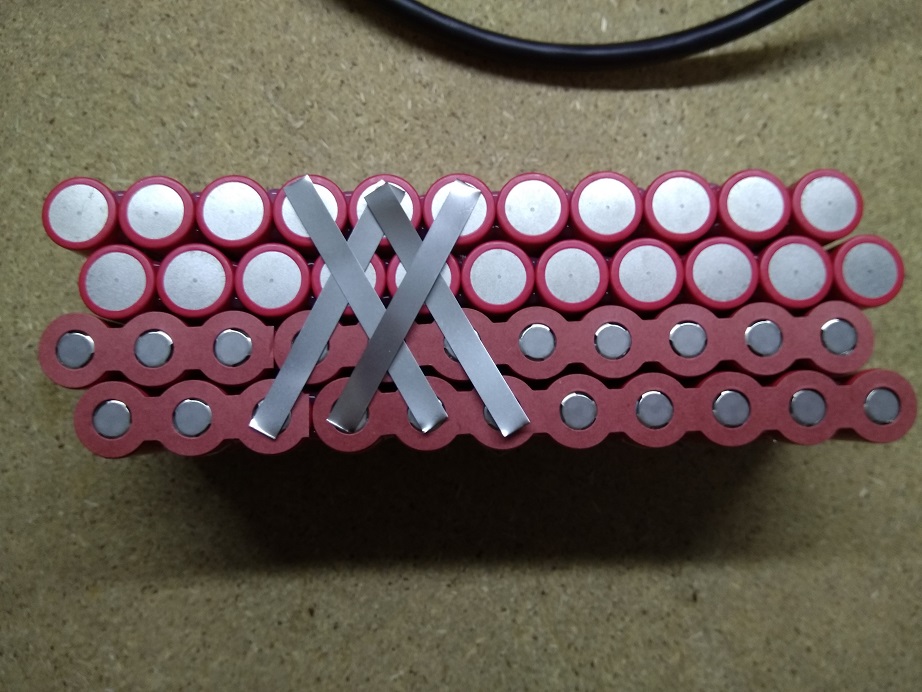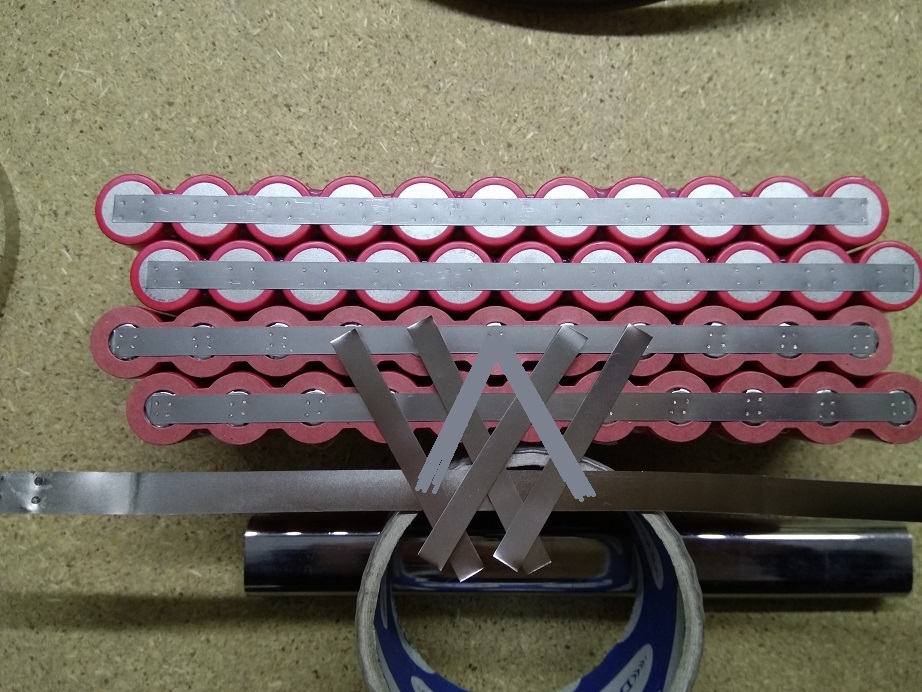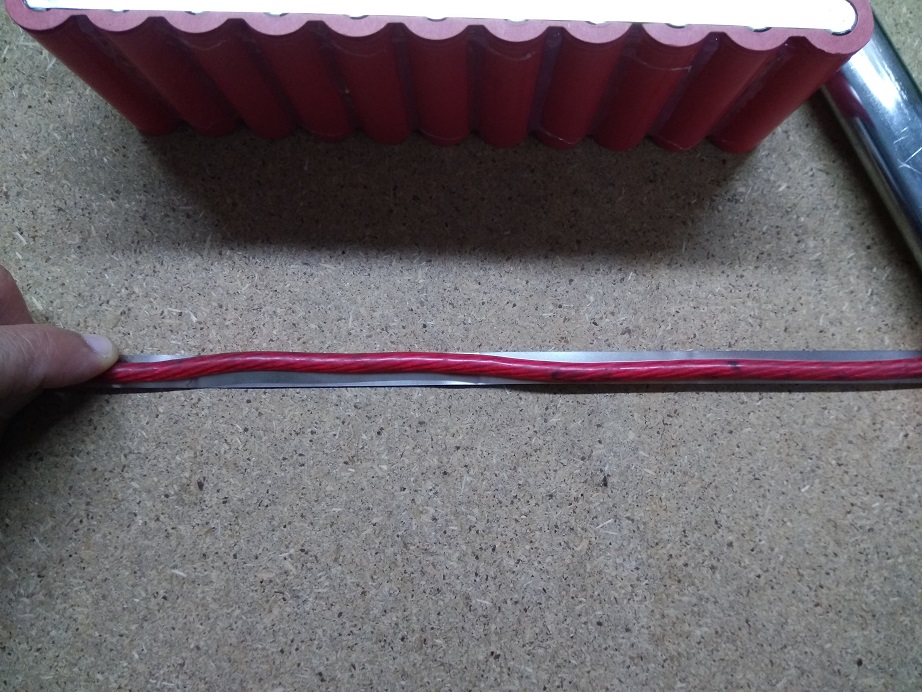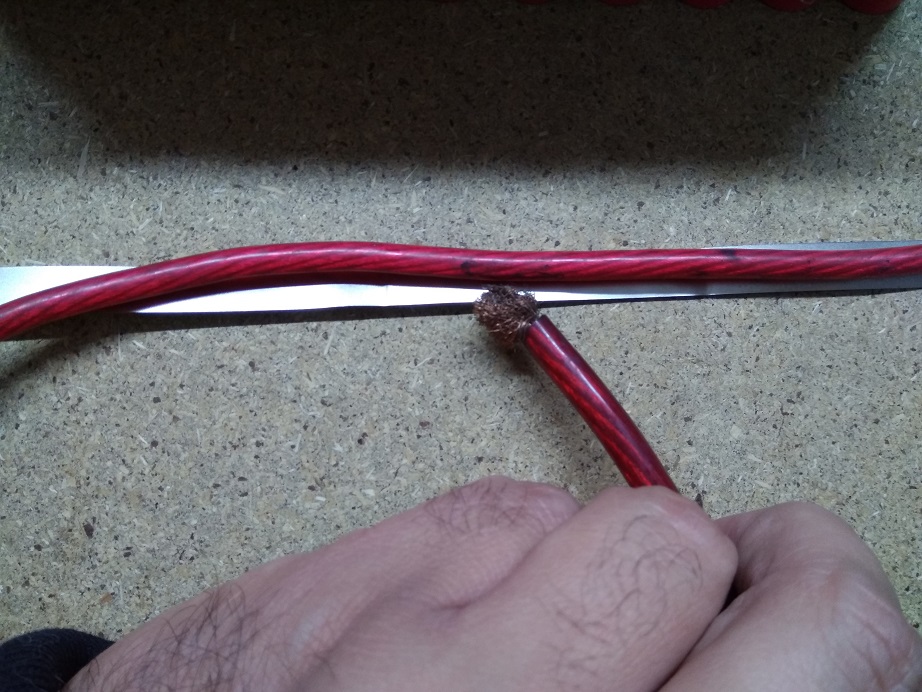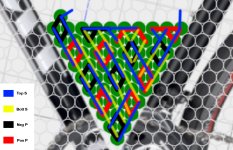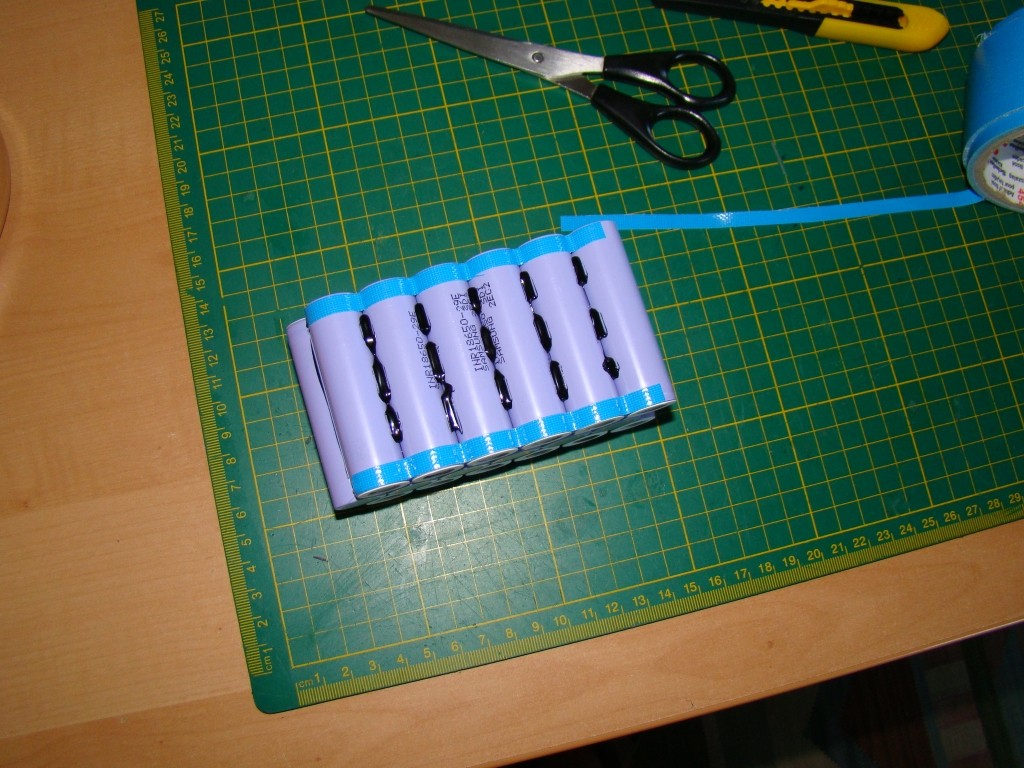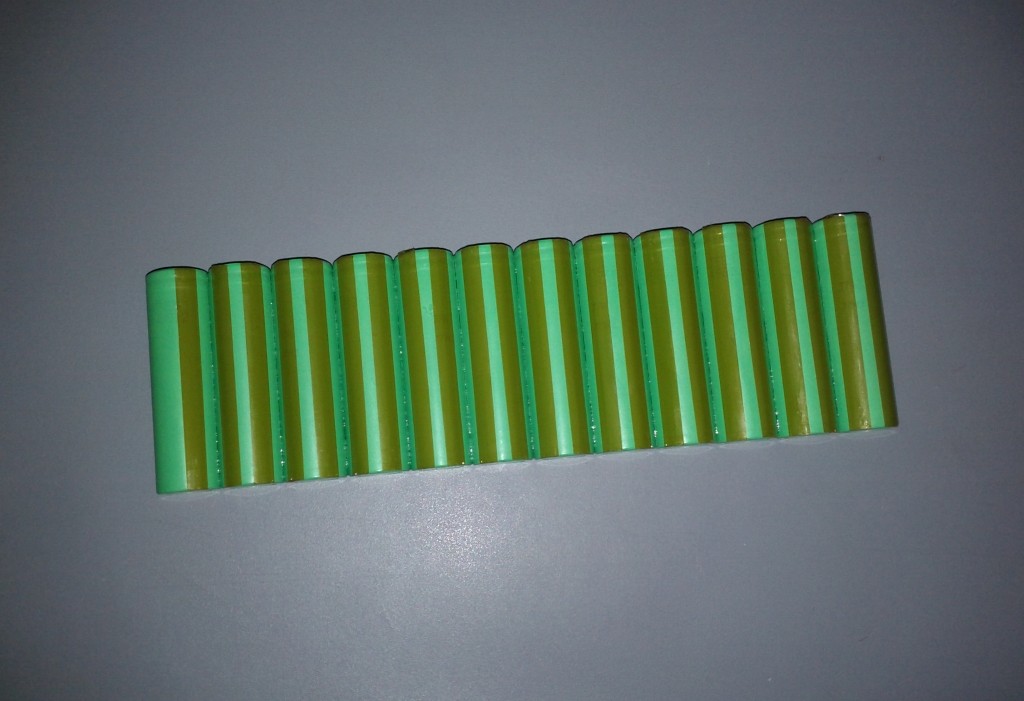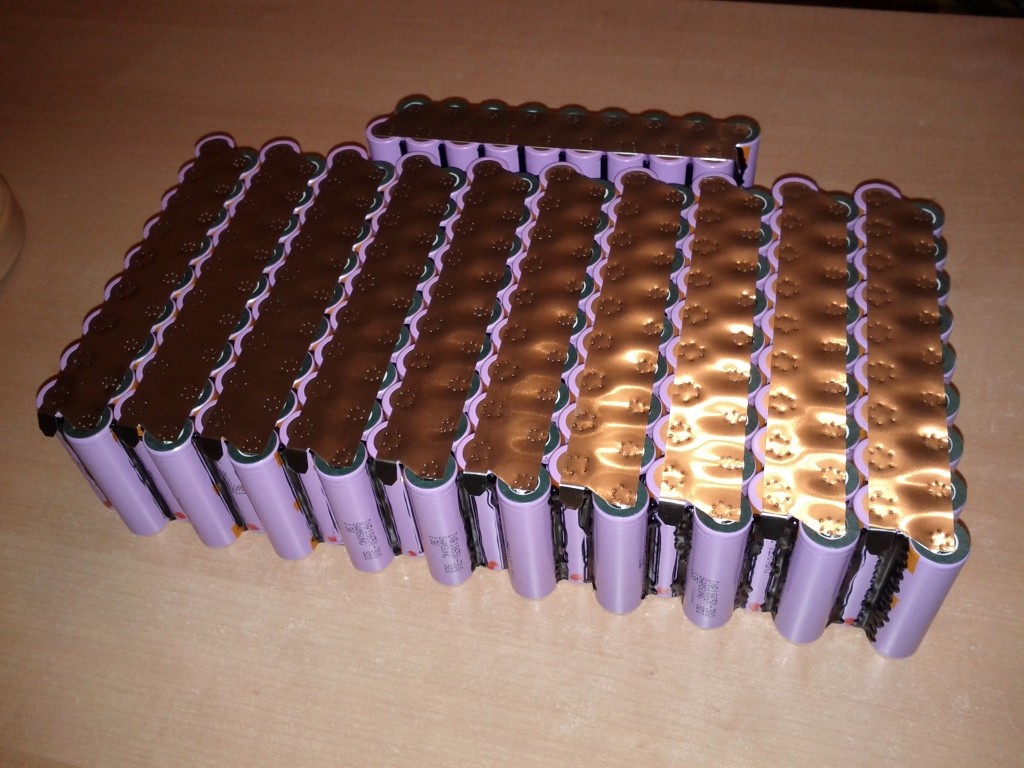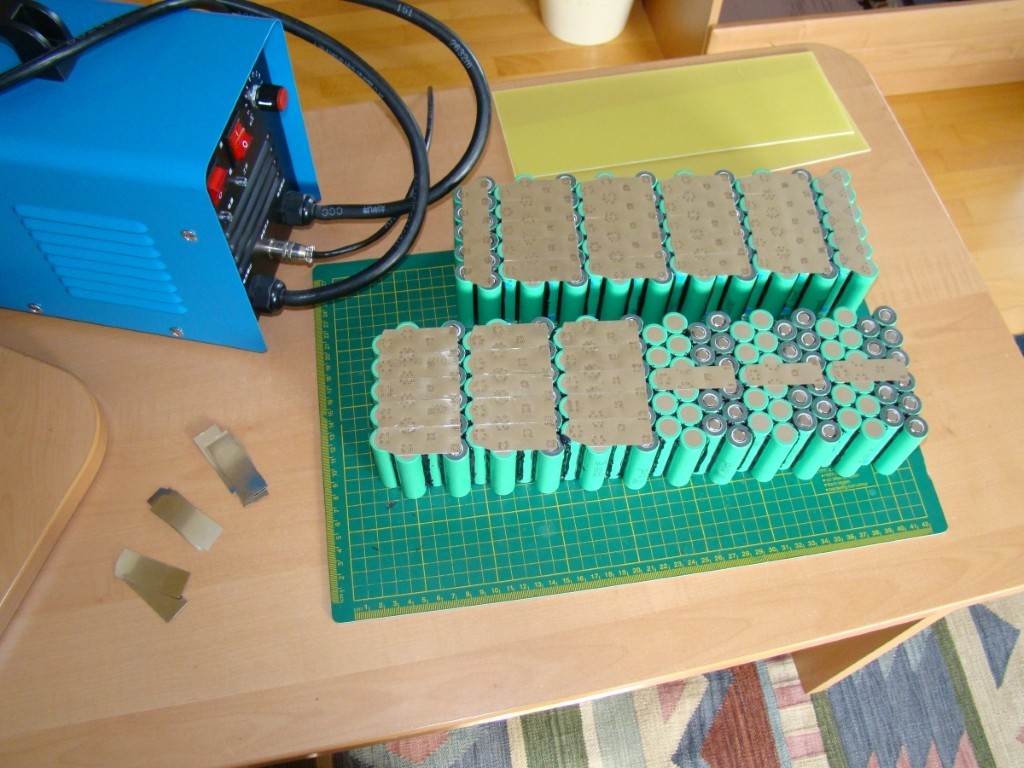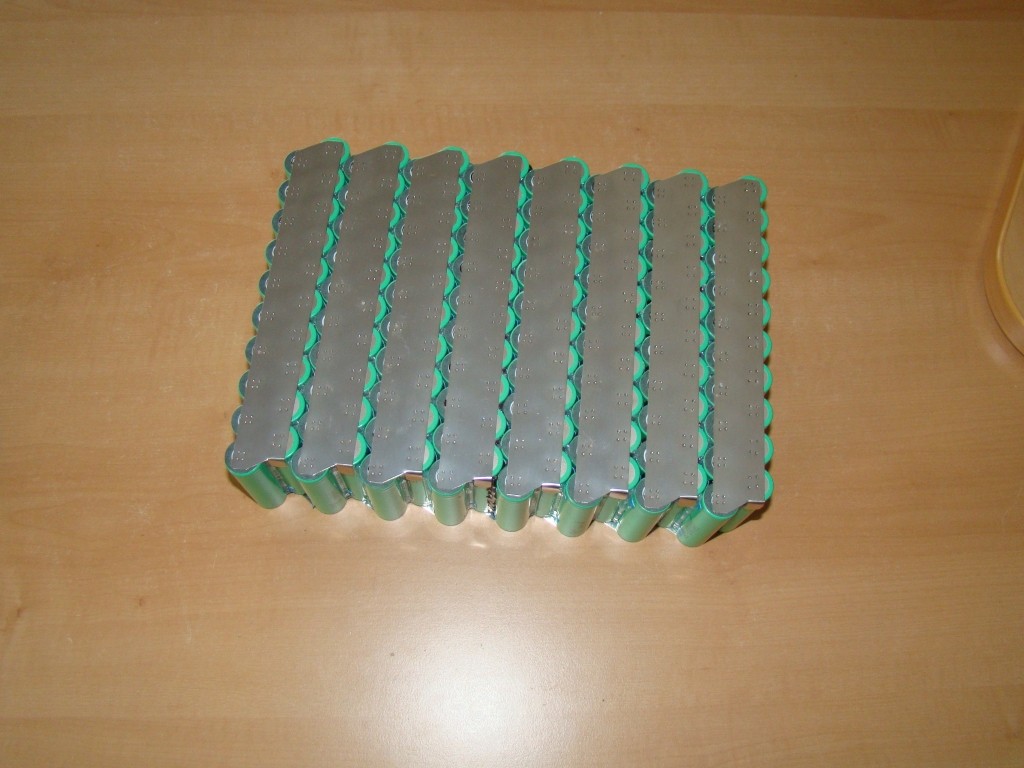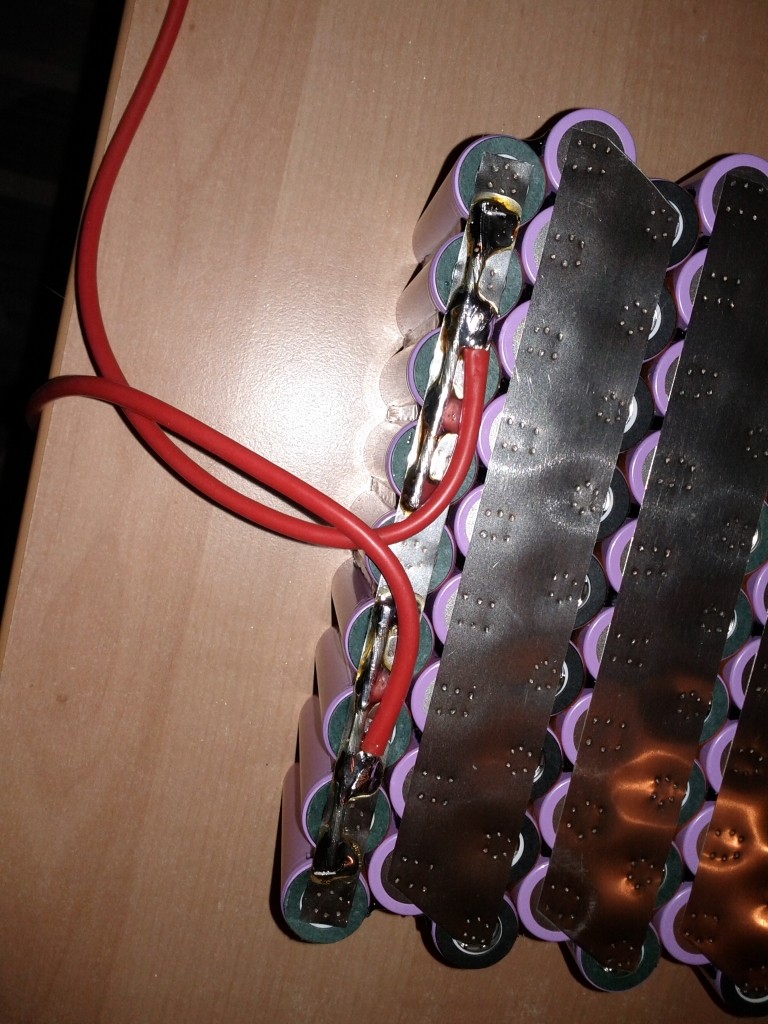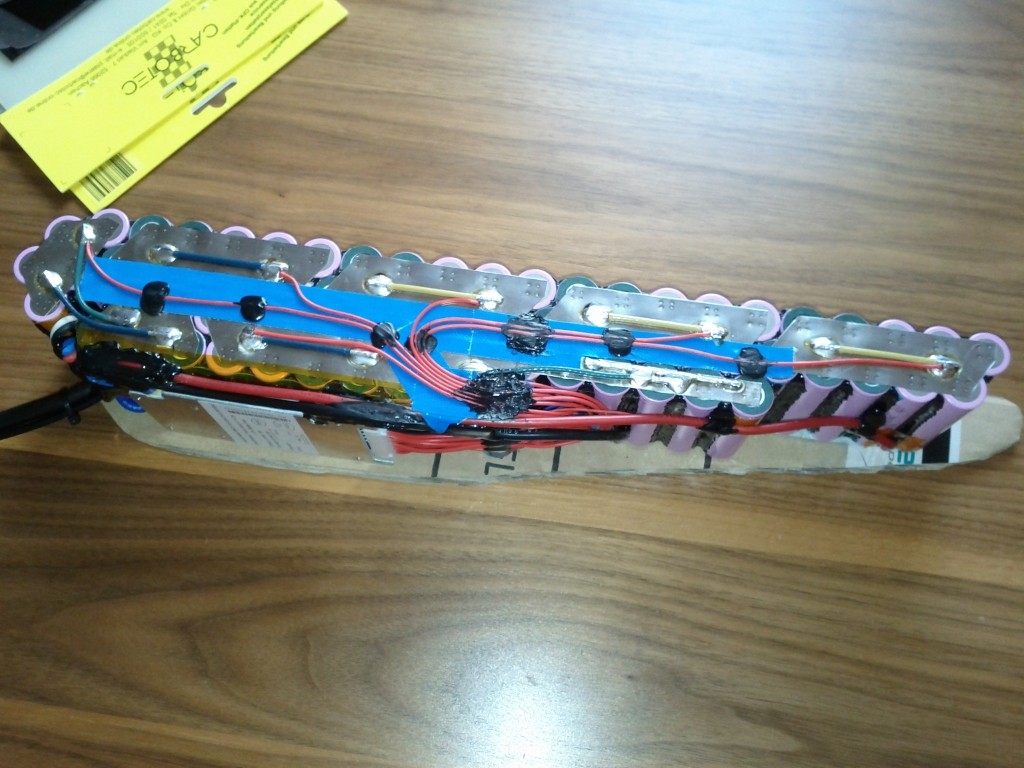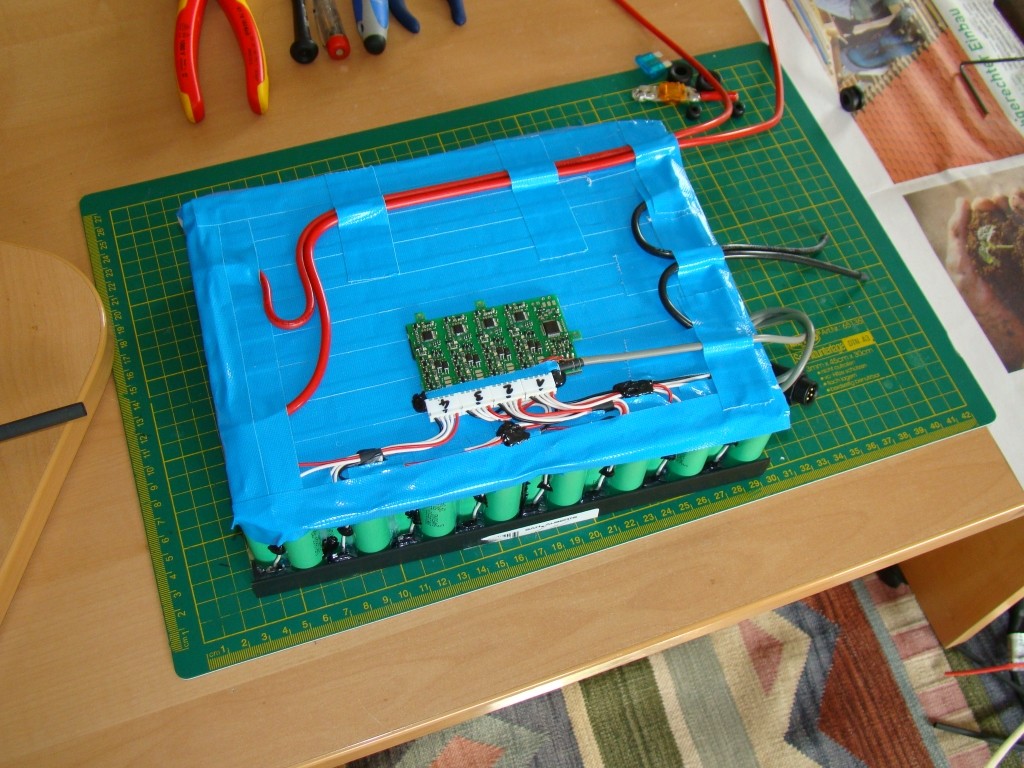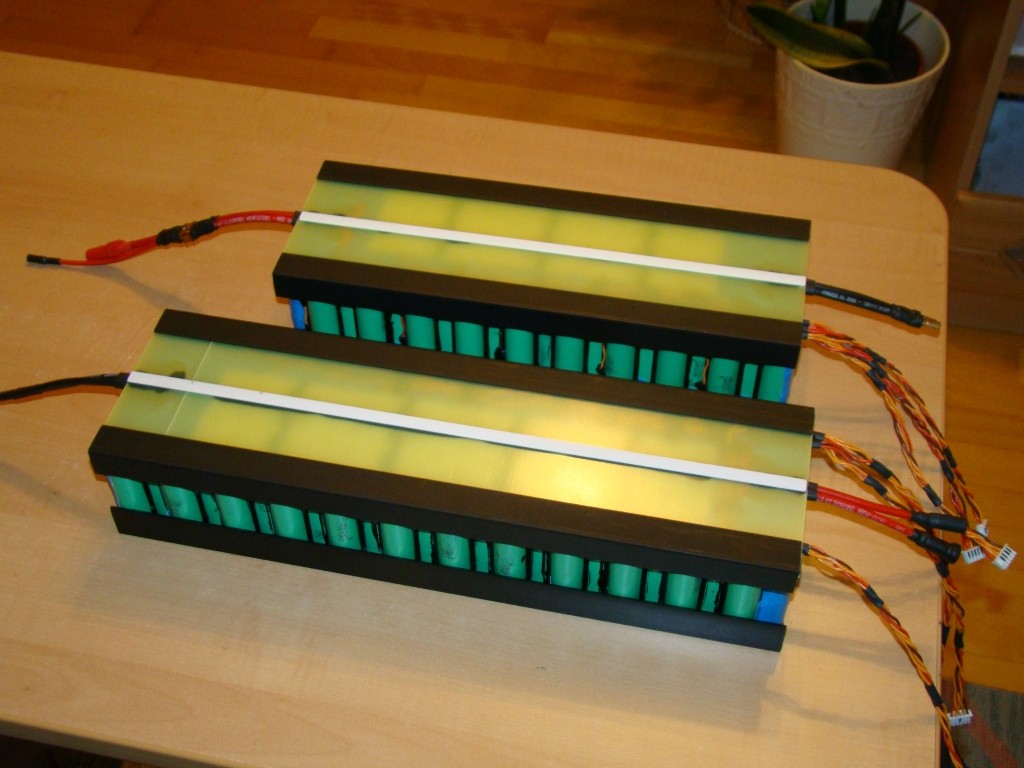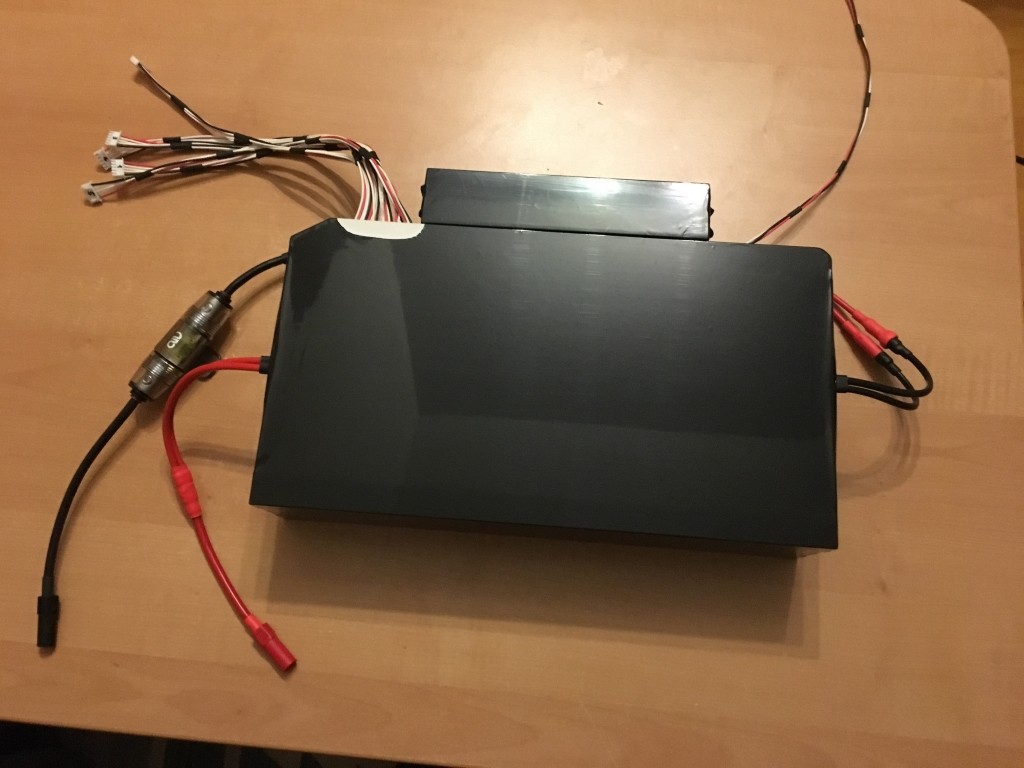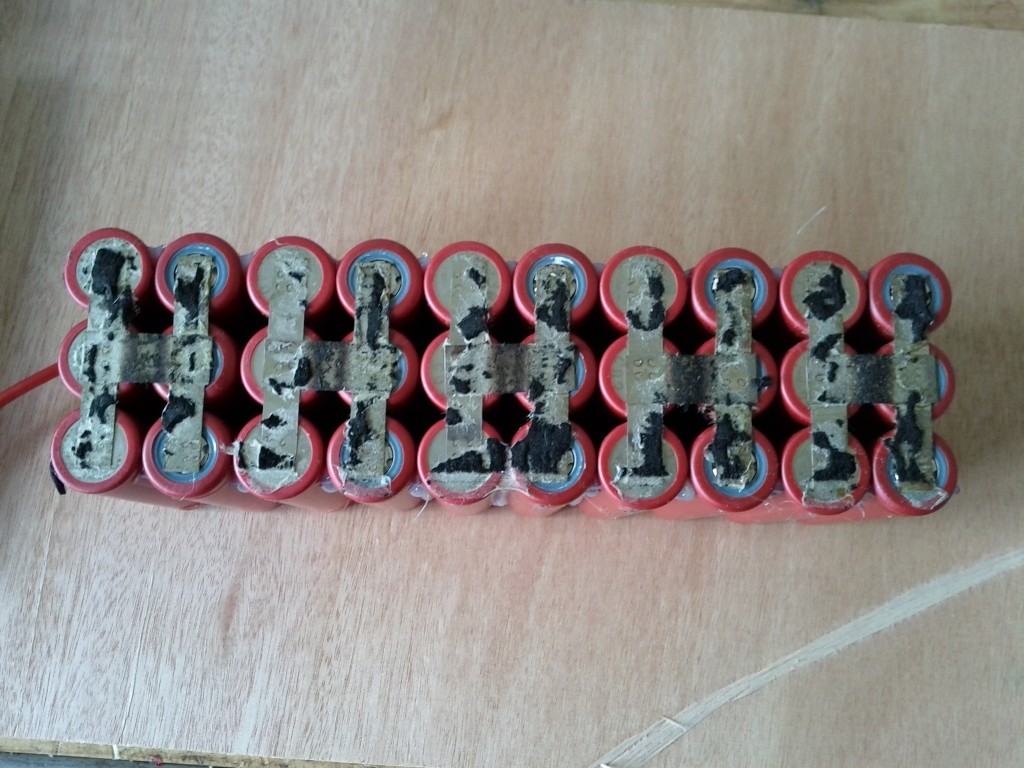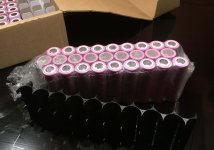Agniusm is using nickel-plated copper
https://endless-sphere.com/forums/viewtopic.php?f=14&t=63190&start=100#p1164028
And there was one example shown of tin-plating of copper:
https://endless-sphere.com/forums/viewtopic.php?f=14&t=63190&start=75#p1148497
The builder using tin-plating expressed disappointment at the finish of the parts, but I suspect they would work fine. I would not expect tin-plated parts to be shiny or pretty. Also, I would only want enough tin thickness to prevent corrosion from exposure to air and humidity.
edit: I just went back and re-read some of the posts. I now feel that copper is the way to go. Maybe even for the paralleling strips. Pure nickel strips are used by industry, but almost all of those are low-amp packs. Nickel-plated copper may be the premium option of choice in the near future, but...there are many affordable ways to apply some type of corrosion protection to copper strips, either before or after the cell connections.
I had been looking at purchasing spot-welded paralleled sub-groups, and then soldering the thick copper bars to make the series connections. That way I don't ever need to buy a spot-welder. And then I realized one of my issues with spot-welding is that any store-bought or DIY spot-welder I was considering had a variable amps in order to allow it to adjust to making a consistent weld on a variety of thicknesses of nickel strips. Rther than try to save a few pennies by using the thinnest nickel that would barely be acceptable, why not just set up for the thickest commonly available? 0.20mm seems to be common here, especially if there is a series connection between every two cells. a 20A cell only has to provide current a short distance through the nickel strip to get to the closest copper bar (of course, the copper would be sized thicker than needed). The series bar might even act as a heat sink for the current peaks in the nickel, but...the nickel would still act as a bottle-neck (un-necessary resistance)
Copper is now (and is likely to continue to be) readily available and cheap. Spot-welding copper is being explored in another thread, and I believe that is the future, because the builders who are interested in a DIY pack, are almost all also interested in high current.
In the DIY capacitive discharge (CD) spot-welder thread, there was a link to a video about taking a large transformer from a scrap microwave oven, and rewinding one end (as shown, it was MUCH easier than I imagined it would be), literally two wraps of thick cable. Since copper is so cheap, we can choose a thickness of copper sheet that is thicker than needed, and then adjust the windings on the transformer to perform good welds on that thickness, no adjustability would be needed after that.
https://www.youtube.com/watch?annot...6Am4HyJnmve&src_vid=vrlvqib94xQ&v=d5pGN6pqkyY
But even beyond a simple caveman transformer spot-welder, agniusm made his laser-cut copper plates that perform the function of paralleling and also series out of copper foil that was thick enough for the series connection. Of course that means that the parallel connections were from copper that was way thicker than needed, but again...copper is cheap. If someone was insistent that they wanted a thinner copper on the cell-tips (perhaps for contact area flexibility?) then it is easy to double-up on the thickness around the series connections, in the same way that we have seen controller traces beefed up.


